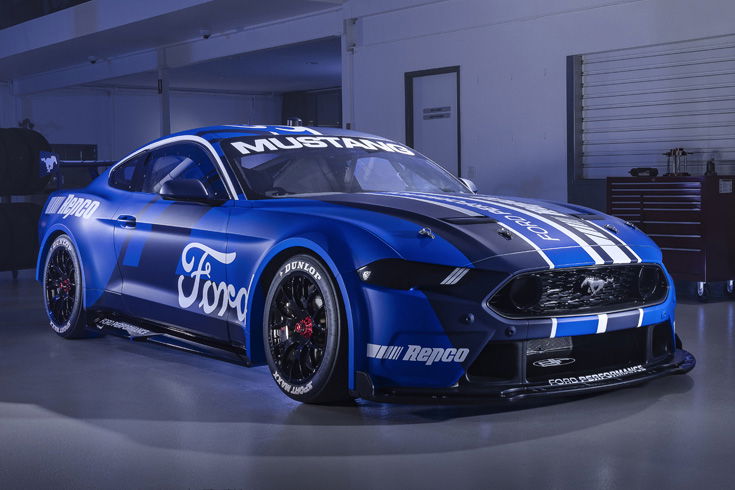
Who: Ford
What: The next-generation of the famous US sports car
When: 2022 reveal, on sale in Australia by 2023
Why: Ford wants to future-proof the Mustang
Ford’s most important upcoming new model is undoubtedly the next-generation Ranger – but it’s most exciting is unquestionably the upcoming Mustang.
The seventh-generation of the iconic pony car is set to play a major role for the brand in the coming years – specifically as the public face of the blue oval in the Supercars Championship. As recently seen at Bathurst, the Gen3 Mustang prototype is much closer in styling to the production car. And, as revealed on our sister site, Speedcafe.com, the Mustang that lines up on the grid at Newcastle to open the 2023 Supercars season will be the upcoming new-look model.
Here’s what we already know about that car – codenamed S650 – based on reports and leaks from the US where the car has been under development for years.
Fresh looks
Expect an evolutionary, rather than revolutionary design. The new S650 will likely continue the ‘retro’ look of the current model, which features the Mustang’s trademark fastback silhouette, with a long bonnet and stubby tail.

But it won’t be a subtle facelift, this is a generational change, so you can expect the new Mustang to have a familiar but fresh look. What does that mean? Well Ford may have given us preview with the “Progressive Energy in Strength sculpture” it unveiled at the 2020 Beijing Motor Show.
This design piece had a definite Mustang look to its appearance, albeit with some more modern design characteristics that seemingly indicate the direction the blue oval is headed.
A sports car with an SUV underneath
It’s widely expected that the S650 will use all-new underpinnings compared to the out-going model. This is to allow for a range of new powertrain options, including electrification, but more on that later.
So, while it will remain a sports car, the new Mustang will be built on the same basic platform as the Ford Explorer SUV. Known as the ‘CD6’ vehicle architecture, this platform allows for a longitudinal engine layout and rear-wheel drive. These are two core pillars of the Mustang and something unavailable with any other blue oval underpinnings.
Critically, switching to the CD6 will help reduce development costs for what is ultimately a relatively small volume car, at least compared to the likes of the F-150 ute in the USA. At a period in time where even the likes of Toyota have been forced to partner with other brands for badge-engineered sports cars (such as the Supra/BMW Z4 and 86/Subaru BRZ), Ford’s decision to keep the Mustang unique to the brand is to be applauded.
V8s to stay, but electric options coming
Another big reason for the switch to the new platform is the flexibility it creates for powertrains. There have long been rumours that Ford is plotting to add at least a hybrid engine option, if not a fully-electric Mustang coupe. This isn’t surprising since this new model will likely run until the end of the decade, meaning Ford needs to future-proof it against ever-stricter emissions standards around the world.

The exact nature of the hybrid system remains under wraps, but speculation suggests it will use an electric motor (or possibly a pair of motors) to send drive to the front axle, while the petrol engine powers the rear wheels.
The petrol engines are tipped to be an evolution of the current units – the 5.0-litre ‘Coyote’ V8 and the 2.3-litre EcoBoost four-cylinder turbocharged petrol. The V6 engine currently offered in the US-only could be replaced by the 3.5-litre EcoBoost V6 turbo, which may be paired to the hybrid system too.
Transmissions are expected to carryover too, with the six-speed manual and 10-speed automatic deemed suitable for the new model.
Whether or not Ford decides to create an all-electric Mustang remains unclear. The brand has hinted at it in the past with an electric concept, plus the creation of the Mustang Mach-E battery-powered SUV. Given the popularity and heritage of the Mustang coupe and convertible and electric version would be a major statement from Ford about its future.
But in Australia, expect the V8 powered ‘Stang to remain the more popular choice – both on the road and racetrack.












Discussion about this post